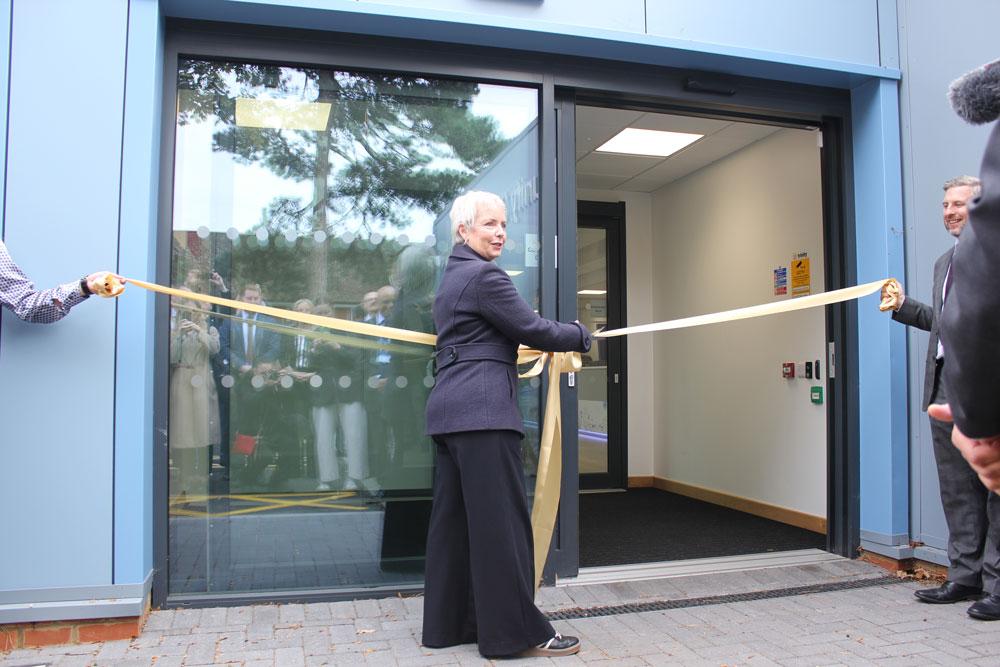On behalf of the Design in Mental Health Network, Alex Caruso explains how designing facilities appropriately can improve safety and patient outcomes, as well as benefit the mental health of patients
During the refurbishment of parts of an existing learning disabilities centre a few years ago, in the background at every site visit, I could always hear one of the residents in distress. The area where the works were being carried out was not connected to the residents’ area and I was surprised to find, in an environment where noise is one of the biggest stressors, how easily the sound travelled to different parts of the building. A few years after, on the same campus, I was involved in the design of a new building to replace the old facility. Once the new building was completed and in use I was delighted to hear from the Modern Matron how well the gentleman had settled into the new building, leading to a drastic reduction in distressful episodes.
The observation and collection of feedback from residents, nursing and maintenance staff to understand what triggers distressing behaviours is the base for our design activities. The aim remains to understand how physical surroundings affect emotions, as people’s emotions ultimately can shape a building’s design. An ever more complete body of evidence is emerging to understand how people react to different environments before and after a design intervention with health outcome measures such as: length of stay, amount of medications, patient stress and mood. Earlier last year, the publication of Design with People in Mind, based on research led by Professor Paula Reavey and sponsored by the Design in Mental Health Network (DiMHN), set out to provide a practical manual offering links between a high-quality environmental design and mental health services, understanding people’s perceptual experiences focusing on different types of space.
Far from supporting one solution that fits all, the comprehensive review of scientific evidence offers a link between design, space and mental health, recognising that we all have precise genetic finger prints that influence our behaviour. A well-designed environment allows us to regain balance and control of our health and condition often in a subliminal way, delaying the escalation of distress and allowing more time to the medical team to treat urgent needs.
To research people’s basic needs in the healing journey and understand how good design can reduce stress is a fascinating investigation where empathy is a critical ingredient via every step of the design process, paying attention to the multitude of details and sensory experiences required to craft a people-centred environment that is robust and sustainable.
The above-mentioned publication explores critical spaces for a good recovery environment, places that offer people endless opportunities for engagement linking in with past experiences, places designed to support emotions and lift the spirit. They are: personal space; therapeutic space; natural space; aesthetic space; and nursing space.
“As people move through space, the design can make a real difference to the emotional and social landscape: it can impact on how much people talk to one another, how supported they feel, whether they feel safe, and perhaps most importantly, how valued the feel as an individual.”
Good recovery environments
The ability to exercise choice and control over the environment, creating a personal space, is an essential component of a good recovery environment, appreciating and respecting the individual characteristics of the people around. Service users need opportunities to engage with each other and those supporting them within a choice of alternative social spaces. Numerous studies have indicated the value of music therapy to address anxiety and depression, so a range of DVD and music options can have a positive impact on service users’ sense of well-being.
In 1860, Florence Nightingale wrote that darkened rooms were harmful and sunlit room were healthy. It is also a well-documented fact that sleep is the most basic of our brain’s restorative needs and the natural light control strategy can be particularly important to restore critical circadian rhythm. A multi-sensory design facilitates a sense of environmental control resulting in a sense of well-being, when interest in the world revives and despair gives way to hope.
We all love colours; they can transform, uplift and change an atmosphere. However, ‘in examining the use of colour and lighting within hospital environments, Dalke, Littlefair, Loe and Camog (2004) report that enclosed environments with strong colours may be over-stimulating or threatening to people experiencing mental distress’. Similarly, we all have our colour preferences and the use of appropriate muted colours can help people navigate with their instincts and transform the environment not just through perception but changing the electromagnetic field around them.
It is important to consider the power of a simple window in the healing process that goes beyond providing natural light, airflow, access to sounds and smells of nature, awareness of day and night cycle, it provides something more intangible: a distraction from the place, a space for meditation and access to memories of a better time. The best therapeutic space is one were people feel at home. Homelike will differ for all of us, ‘however findings showed the provision of private spaces and homely design to be associated with increased well-being and social interaction’.
Furthermore, ‘Lawson, Phiri & Wells-Thorpe (2003) studied the effects of the architectural healthcare environment on well-being and compared service user outcomes between an existing facility and a new build medium secure mental health environment. Whilst the number of instances of physical and verbal aggression remained the same in the two sites, the severity of incidents was reduced in the new facility and there was a two third reduction in service user self-harm. Rates of seclusion also reduced by 70 per cent and there was a 14 per cent reduction in service user length of stay in the new unit’.
The (potential) conflict between security, safety and homeliness will always be there and it is important to work with clinical teams to assess positive risk taking to explore fresh and simple solutions while ensuring compliance with published guidance and regulations. Rather than providing an intimidating large space, the use of furniture, light, texture and colours can help create opportunities for groups to congregate in an inviting environment.
‘Connections between mental health and the natural environment have long been recognised and features of 19th century asylum design which included providing views of natural landscapes from indoors and opportunities for patients to actively engage with nature were considered beneficial to the therapeutic process’. (Hickman, 2009)
In line with the biophilic design’s notion that nature itself has a healing effect, a natural space is an important place for service users’ expression and reaffirmation of identity and autonomy. Landscaped outdoors with raised planters allow residents to interact with nature as part of their therapy feeding constantly on the energy of light and colour that surround them. Selected plants can support the perception of seasonal changes and the soothing sound of a water feature reinforces therapeutic landscape design values.
Art installations offer endless opportunities to bring the outside into the building, creating an aesthetic space using themes inspired by local natural surroundings that enable a stronger sense of self and concept of belonging.
‘Although research to evaluate the impact of art interventions specifically within the mental healthcare settings is limited, the findings of existing studies suggest that environmental enhancements can positively impact on the health and well-being of service users and staff’. (Daykin et al., 2008)
The harmony of spaces
Another essential place for a recovery environment is the nursing space, it is an ideal place to maximise opportunities for social engagement and partnership working. ‘Whilst empirical research is limited, the findings presented suggest that open nursing stations might lead to greater service users’ satisfaction through improved staff accessibility and service user-staff interaction’.
Assistive technology, such as digital hand-held devices, apps and simple note pads, can be integrated to assist staff and service users alike. Numerous research shows that complementing the environmental design with assistive technology can help people with mental health conditions regain control of their behavioural and emotional disorders and assist with cognitive impairments.
At the essence of preventive medicine all causes are examined without exclusions, similarly in designing a mental health environment we recognise that what has worked for a patient group for a trust may not work entirely in another context. The harmony of all spaces is the key for a sustainable environment focusing on recovery. Like recovery itself, such harmony is often achieved gradually, examining emerging common traits. It is an endless fascinating journey to continuously improve considering the several perspectives of the people using the environment created.
A well-designed environment that improves safety and patient outcomes can be described as complementary to preventive medicine and an appropriate way to limit mental health outbreaks, allowing people to be themselves, promoting hope, independence and empowerment. A more detailed and comprehensive review of scientific evidence relating to the link between design, space and mental health has been recently completed and is available on the DiMHN website.
Mental Health Rehabilitation & Recovery Facility
Alessandro Caruso Architects has designed a specialist rehabilitation and recovery facility. The facility caters for people who require an environment for mental health recovery on behalf of Hull and East Yorkshire Mind. The accommodation will provide a therapeutic and safe environment where the residents can build confidence while developing independent living skills to continue the process of recovery.
ACA and DiMHN believe in the benefits of user-orientated design. This means developing a thorough understanding of the eventual users and their perceived environment. With this method we can create a space that will promote confidence, comfort and safety. The step-down process integrated into the core of the design, gently encourages independence as the residents move through the stages of recovery. User-orientation and way finding is simplified throughout the scheme using colour rather than signage to denote a homely environment. Through ACA’s specialist knowledge and research, the scheme builds on the psychology of colour to encourage a harmonious and therapeutic atmosphere.
To see more please visit aca-i.com





